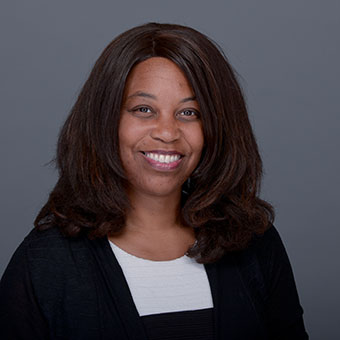
The real reward for the faculty-student Perception and Psychoacoustics Lab Group in psychology at Hope College was having two research projects selected for presentation during a prestigious international conference. That the event took place in Hawaii, and that Hope was among the leading institutions for the number of undergraduate students who made presentations, were bonuses.
Faculty member Dr. Sonja Trent-Brown and four Hope students with whom she has conducted the work attended the Fifth Joint Meeting of the Acoustical Society of America (ASA) and Acoustical Society of Japan (ASJ), which was held in Honolulu on Monday-Friday, Nov. 28-Dec. 2. They were invited to share their research focused on the difference that the age, gender and ethnicity of African American and European American children make in their voice quality when they speak, and how accurately adults are able to determine such qualities when they can hear but not see the child who is speaking.
“Implications of this work can be extended for individuals who work with children and in speech-related professions to reduce biases that occur as a result of personal language experience,” said Trent-Brown, who is the John H. and Jeanne M. Jacobson Associate Professor of Psychology and the special assistant to the president for culture and inclusion at Hope. “Results will have implications for audiologists, speech language pathologists, developmental scientists, and others in the field of communication sciences and disorders.”
The student researchers who attended the conference, all of whom are seniors and psychology majors, are Julia Licata of Livonia, Nicole Marsh of Traverse City, Dalila Salas of Holland and Emily Simmons of Mount Clemens. And while four participating students may seem a modest number, Trent-Brown noted that it’s important to consider the context.
“Most of the presentations were by Ph.D.-level faculty and graduate students, many from major research universities not only in Japan and the United States but other nations as well,” Trent-Brown said. “It’s a tremendous affirmation of the quality and significance of the work that Dalila, Emily, Nicole and Julia have done, along with Brooke Ledsworth of Norton Shores, who is new to the Perception and Psychoacoustics Group this fall.”
Licata, Salas and Simmons also received travel awards in support of their participation, with Salas receiving the 2016 ASA Student Council Travel Award for the Speech Communication Technical Committee. The ASA has 13 Technical Committees, with only one Student Council Travel Award for each.
All five researchers—Trent-Brown and the four students—were contributors to both studies. Simmons was the lead presenter for “Perceptual differentiation of African American and European American children: Accuracy, confidence and reaction time,” and Salas was the lead presenter for “Acoustic variation among African American and European American children: Age, gender and ethnicity.”
The Acoustical Society of America was organized in 1929 and has approximately 7,500 members from a variety of fields related to sound, including physics, electrical, mechanical, and aeronautical engineering, oceanography, biology, physiology, psychology, architecture, speech, noise and noise control, and music. The Acoustic Society of Japan was founded in 1936 and has more than 4,400 members, and is organized in nine Technical Committees including Architectural Acoustics, Electroacoustics, Musical Acoustics, Noise and Vibration, Psychological and Physiological Acoustics, Speech, Ultrasonic and Underwater Acoustics, Sono-Physics and Acoustic Imaging.